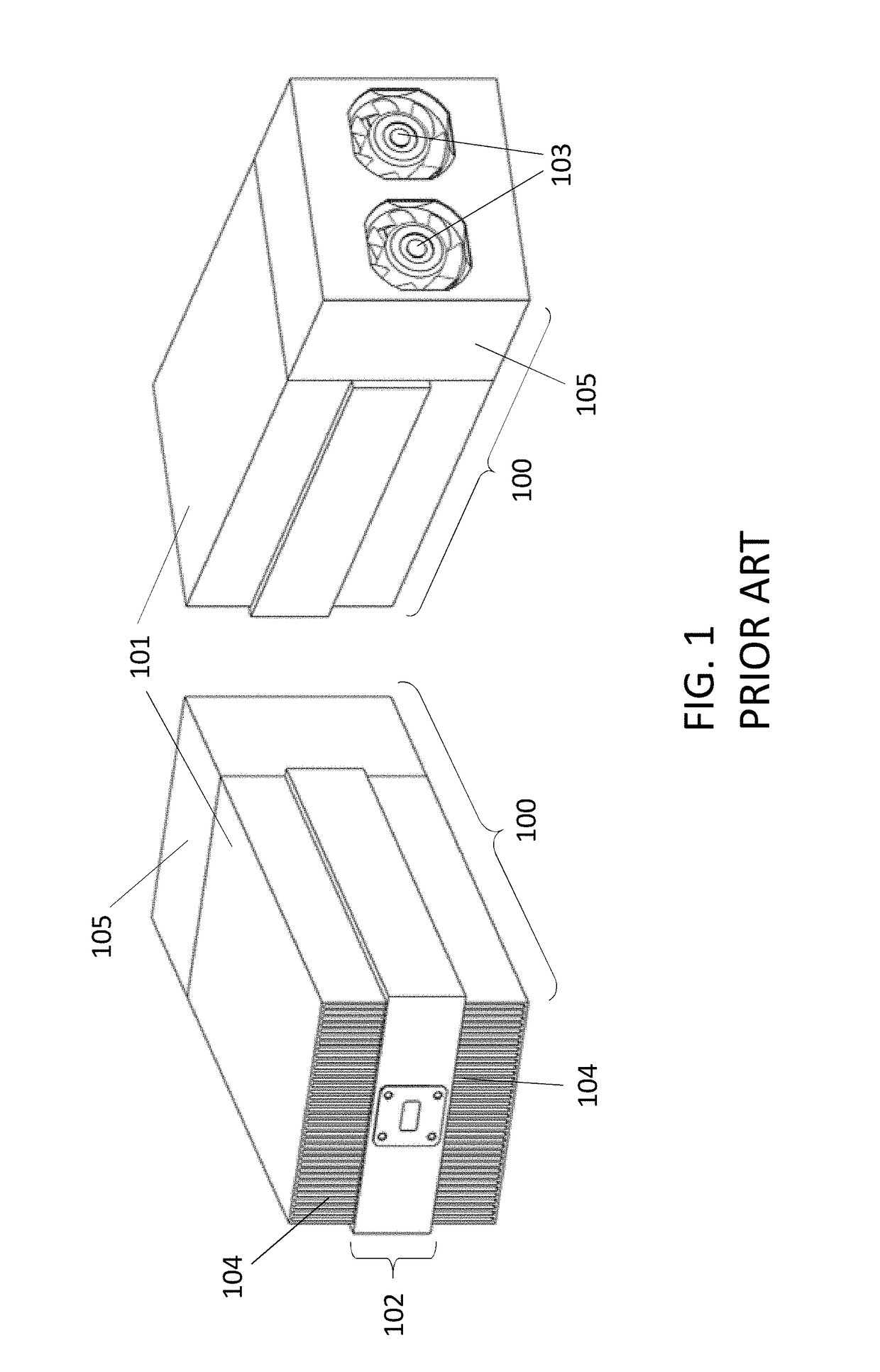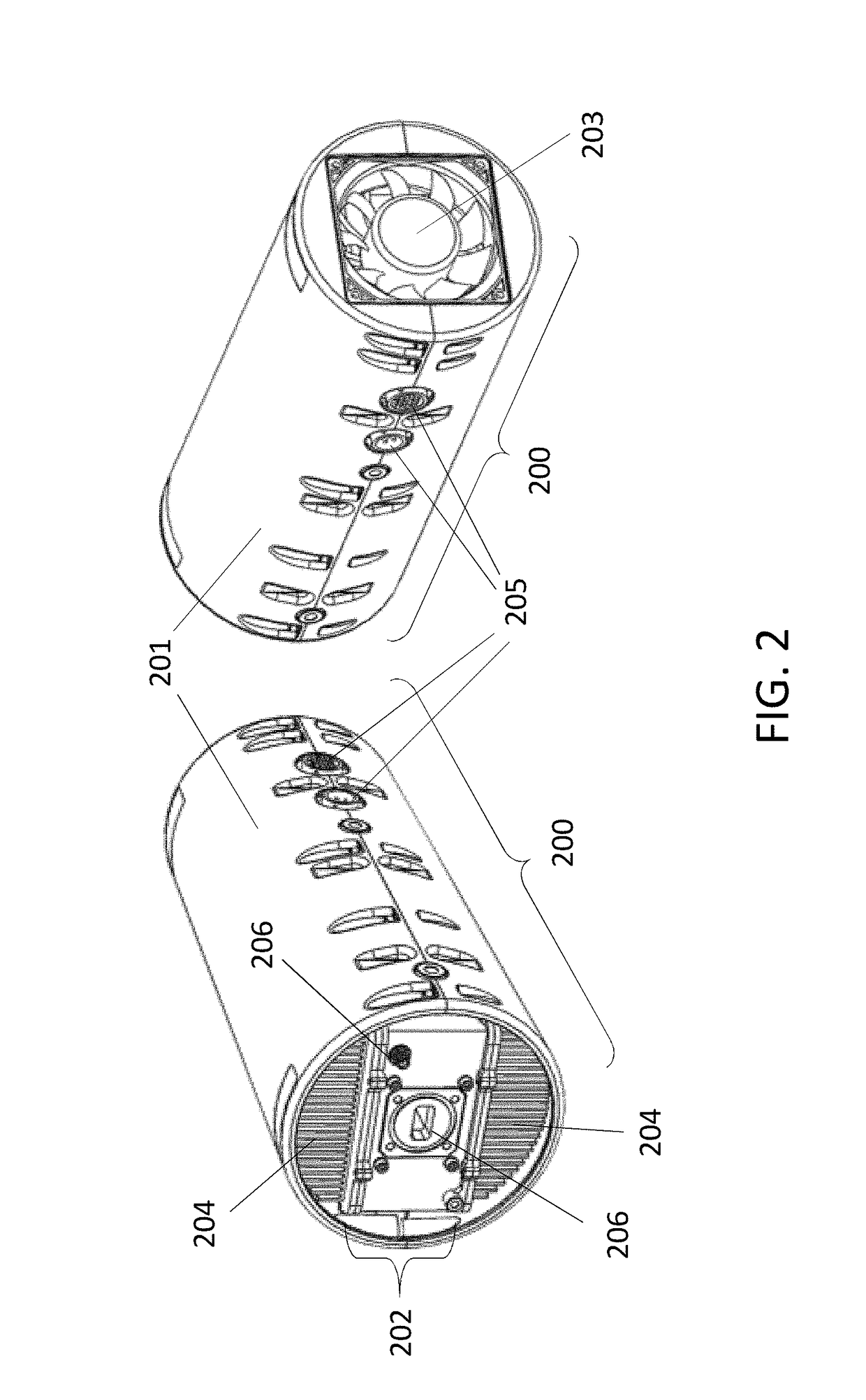Satellite transmitter system
a satellite transmitter and transmitter module technology, applied in the direction of electrical apparatus construction details, sustainable buildings, high-level techniques, etc., can solve the problems of increasing power requirements for uplink data signal transmission, heavy and cumbersome carrying and setting up, and conventional transmitter modules
- Summary
- Abstract
- Description
- Claims
- Application Information
AI Technical Summary
Benefits of technology
Problems solved by technology
Method used
Image
Examples
Embodiment Construction
[0022]Generally speaking, a satellite transmitter system includes a transmitter module that, via its rounded form factor, more efficiently dissipates high levels of heat that is generated while converting and amplifying lower frequency and lower power data signals into higher frequency and higher power satellite transmission signals (i.e., “upconverting” and “amplifying”). For example, the uplink transmitter module may be coupled with a rounded cross sectioned fan that allows for more even and optimized airflow distribution (i.e., better heat dissipation) within the rounded form factor of the transmitter module. Moreover, the transmitter module may include one or more heat sinks coupled to a transmitter unit that processes frequency conversions and amplifications, generating the high levels of heat. Importantly, each heat sink may include a plurality of heat sink fins, and depending on the heat level generated at particular location of the transmitter unit, a differently sized heat ...
PUM
 Login to View More
Login to View More Abstract
Description
Claims
Application Information
 Login to View More
Login to View More - R&D
- Intellectual Property
- Life Sciences
- Materials
- Tech Scout
- Unparalleled Data Quality
- Higher Quality Content
- 60% Fewer Hallucinations
Browse by: Latest US Patents, China's latest patents, Technical Efficacy Thesaurus, Application Domain, Technology Topic, Popular Technical Reports.
© 2025 PatSnap. All rights reserved.Legal|Privacy policy|Modern Slavery Act Transparency Statement|Sitemap|About US| Contact US: help@patsnap.com



